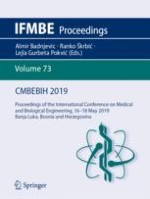This volume gathers the proceedings of the International Conference on Medical and Biological Engineering, which was held from 16 to 18 May 2019 in Banja Luka, Bosnia and Herzegovina. Focusing on the goal to ‘Share the Vision’, it highlights the latest findings, innovative solutions and emerging challenges in the field of Biomedical Engineering. The book covers a wide range of topics, including: biomedical signal processing, medical physics, biomedical imaging and radiation protection, biosensors and bioinstrumentation, bio-micro/nano technologies, biomaterials, biomechanics, robotics and minimally invasive surgery, and cardiovascular, respiratory and endocrine systems engineering. Further topics include bioinformatics and computational biology, clinical engineering and health technology assessment, health informatics, e-health and telemedicine, artificial intelligence and machine learning in healthcare, as well as pharmaceutical and genetic engineering. Given its scope, the book provides academic researchers, clinical researchers and professionals alike with a timely reference guide to measures for improving the quality of life and healthcare.
